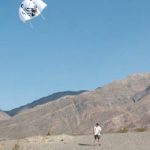

AUGUST 2008
VOLUME 1, NUMBER 2
Kite Fly on German Lake Celebrates
Weather Station’s 100th Anniversary 5
Spotlight on an American Flight Pioneer 9
A German Kite Collector’s Trove 12
Studying Weather Stations in Scandinavia 14
BEN RUHE
Drachen Foundation does not own rights to any of the articles or photographs within, unless stated.
Authors and photographers retain all rights to their work. We thank them for granting us permission to share it here. If you would like to request permission to reprint an article, contact us at discourse@drachen.org, and we will get you in touch with the author.
Kites as Collector’s Items 17
DOUWE JAN JOUSTRA
Two Weeks at the Hui 21
SCOTT SKINNER & SUSAN ROBB
To Make the Most of
Wind Power, Go Fly a Kite 30
MICHAEL BROOKS INTRODUCTION BY DAVE LANG
FROM THE EDITOR
EDITORS
Scott Skinner Ali Fujino Katie Davis
BOARD OF DIRECTORS
Scott Skinner Martin Lester Joe Hadzicki Stuart Allen Dave Lang Jose Sainz Ali Fujino
BOARD OF DIRECTORS EMERITUS
Bonnie Wright Wayne Wilson Keith Yoshida
Drachen Foundation is a non-profit 501(c)(3) corporation devoted to the increase and diffusion of knowledge about kites
worldwide.
I think that readers of this, the second installment of the Drachen Foundation’s Discourse: from the end of the line, will find an exciting variety of kite-driven articles. You’ll be reminded of the great years of Drachen’s Kite Journal with the latest entries from Ben Ruhe, who will introduce you to kite historians Jan Westerink, Douwe Jan Joustra, and Ulli Draheim. The vitality of the historical kite movement in Europe is on display with these three, and also with the contribution of Dorte and Frank Schulz, who take us back to turn-of- the-century (20th, that is) Scandinavian weather researchers.
Drachen Foundation board member Dave Lang continues to monitor the worldwide kite-energy movement and introduces Michael Brooks, who gives us an idea of the state-of-the-art of kite energy ideas. Scott Skinner and Susan Robb share their artist in residence experiences from Hawaii’s Hui No’eau Visual Arts Center in Maui, with images captured by Discourse editor Katie Davis.
Finally, let me issue this challenge to Discourse readers: find and report additional information pertaining to a Discourse article and we will reward you with our exclusive Sherpa Gear. We want this to be an interactive publication, with contributions from our readers. Serious research or happenstance discovery are of equal importance if they lead us to new kite material, and we know that ours are not the only eyes looking for new material. I hope you enjoy this installment and that it leads you to new experiences in kiting.
Scott Skinner Board President
Drachen Foundation
CONTRIBUTORS
DOUWE JAN JOUSTRA
The Netherlands
Kite-maker and -fanatic Joustra has been instrumental in several Drachen Foundation kite symposiums. With a fair and open approach, he shares his knowledge and resources with anyone who asks.
DAVE LANG
Vashon Island, Washington
A veteran aeronautics and space dynamics engineer, Lang designed the flight simulators on which all NASA astronauts trained for the Gemini, Rendezvous and Apollo
lunar missions.
SUSAN ROBB
Seattle, Washington
Robb is not an artist chained to her drawing board. Trained in photography, she translates her environment and energy into pieces that are many things at once: sculpture, video, playground and conversation.
BEN RUHE
Gloucester, Massachusetts
A powerhouse professional journalist and editor of Drachen’s beloved Kite Journal, Ruhe has reported on the best and brightest of his time. His travels teach us the important lesson: “If you don’t go, you might miss it!”
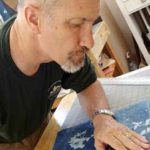 SCOTT SKINNER
SCOTT SKINNER
Monument, Colorado
A former Air Force instructor pilot, Drachen’s board president has flown and designed kites for three decades. Skinner’s military training created the structure for him to express himself as a visionary kite artist.
KITE FLY ON GERMAN LAKE CELEBRATES WEATHER STATION’S 100TH ANNIVERSARY
Ben Ruhe

ABOVE: Recreating the flight 100 years ago that inaugurated an important water-borne weather station at
Friedrichshafen, Lake Constance firemen use their fast emergency boat to tow an historic weather kite replica aloft. Scientific instruments aboard could record masses of useful data so that accurate weather predictions could be made. Kites were flown on a daily basis to altitudes of many thousand feet. Because of the tow, wind was no factor. The replica kite was made and flown by the international Historical Kite Symposium while holding its
annual meeting in the city.
A busy Lake Constance ferry port in the south of Germany, Friedrichshafen is inextricably linked to the stately Zeppelins built and flown there for the last century. The link to inventor Count Ferdinand von Zeppelin remains strong. Throughout the city, streets, schools, cafes, even a dress shop are named for him. A children’s slide near the sprawling waterfront Zeppelin Museum is shaped like an airship.
Because the huge, lighter than air flying machines required good weather predictions to be safely flown, a kite link with the Zeppelin evolved soon after the
Wolfgang Seitz
flight of the first Zeppelin in 1900. Professor Hugo Hergesell, of Strassbourg, a friend of Count Zeppelin, proposed that a weather station be set up in the area. Since Lake Constance sits in a bowl surrounded by mountains, the only feasible space was the 30-mile-long lake itself. Hergesell urged a fast boat for towing weather kites and both Count Zeppelin and the surrounding regional states, often at odds, but not this time, joined in financing the concept.
A steam-powered 18-knot speedster named the Gna (a Nordic nymph who lives in the water and then rises into the air) was built and the weather research commenced in 1908. As part of the celebration of the 100th anniversary of that event this year, Friedrichshafen mounted a major exhibition in the waterfront Zeppelin Museum. The institution also served as host to the international Historical Kite Symposium honoring the event. This group, mostly German but with a smattering of members from as far afield as New Zealand, showed off choice historical kite recreations on the waterfront in front of the museum and, as a main public event, flew a replica weather Boxkite from a speedy fire department boat out in the lake, just as had been done many years ago. The kite rose easily and flew steadily, showing how efficient a ship tow was in practice. Wind, or lack of it, was
simply no factor. Kites with weather instruments aboard could readily be flown well over 10,000 feet in the air – day after day. Thus observations could be compiled and systematized. Weather predicting became standardized and accurate.
The eighth annual meeting of the Historical Kite Symposium drew 50 participants over a long weekend. They heard lectures, toured the museum, and built their own replica kite in on the spot. The model chosen was a Russian weather model invented before World War I by the Russian Kuznetsov. Efficiently organized, the gathering was run by Detlef Griese and wife Elke and by Charles Tacheron and Hilmar Rilling. The Griese couple runs a kite archive, focusing on Europe.
BELOW, LEFT: As head of the Zeppelin Museum, Jurgen Bliebler as a perk gets to take the Maybach (see page 7) off display occasionally and drive it around town. “It’s a movable exhibit, publicity for the museum,” he says. He has collected traffic violations with the vehicle. One was for illegal parking, another for speeding. “I was only going 8 kilometers an hour over the limit,” he says. “I paid both tickets,” he says this grudgingly.
CENTER: Count Ferdinand von Zeppelin.
RIGHT: Elke and Detlef Griese were the principal organizers of the Historical Kite Symposium’s meeting in Friedrichshafen celebrating the 100th anniversary of the establishment of a weather station in the city.


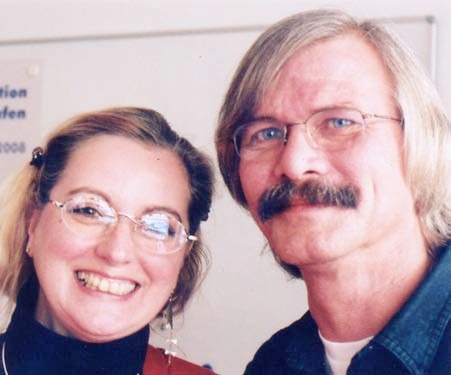
Ben Ruhe New York Times Company Ben Ruhe
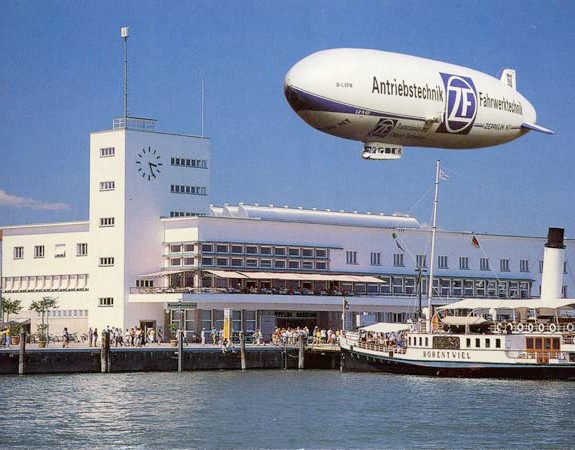
Weather kite flying at Friedrichshafen continued for years after World War I until superceded by the use of aircraft. The kite station a quarter mile down the waterfront from the museum was razed in the Thirties and replaced by an apartment building. The wharf there where the speedy Gna was docked remains, however, about how it was originally.
As an urban renewal scheme, the museum and city are now considering rebuilding the kite station as a combined cultural monument and tourist attraction. The museum also plans to add a considerable kite component to its displays and collection. As well as the many Friedrichshafen industries having a link to Count Zeppelin, his family, scattered across Germany, can be expected to pitch in as well.
Since it packs in the crowds on a daily basis, the Zeppelin Museum would be a first rate venue for a display of kites. With 43,000 square feet of exhibition space, its featured display is a reconstructed 108-foot section of the legendary Hindenburg, the LZ 129, which exploded at its berth in Lakehurst, New Jersey, in 1937. The elegant rooms on view convey how passengers relished to the full the indescribable pleasure of silently floating through the air in surroundings of great style and luxury. Zeppelins have always been the ultimate in glamour.
Today, the waterfront in front of the museum retains this chic, as ferryboats servicing the dozens of ports up and down the lake scurry in and out of harbor. Tourists and travelers soak in the sun at outdoor cafes. Back and forth overhead, a small, high tech Zeppelin carrying students and tourists floats by in silence. It’s a scene to bring a smile to the face of old Count von Zeppelin.
ABOVE: The Zeppelin Museum on the busy Friedrichshafen waterfront where ferryboats
ply their trade all day. Note museum’s second floor restaurant with its stunning view all the way across Lake Constance to snow-capped Swiss Alps in the distance. On either an educational or tourist jaunt, a small airship floats silently by.
BELOW: A “technology transfer” in Friedrichshafen reflected the wide influence of the Zeppelin airships on Friedrichshafen industry. This grand, three-and-a-half ton Maybach automobile from the 1930s was named the Zeppelin. Weighing three and a half tons, it was Germany’s answer to Britain’s Rolls-Royce. It is on exhibition at the Zeppelin Museum as a link to the glamour associated with Zeppelin travel. Maybach engines remain a major

Ben Ruhe
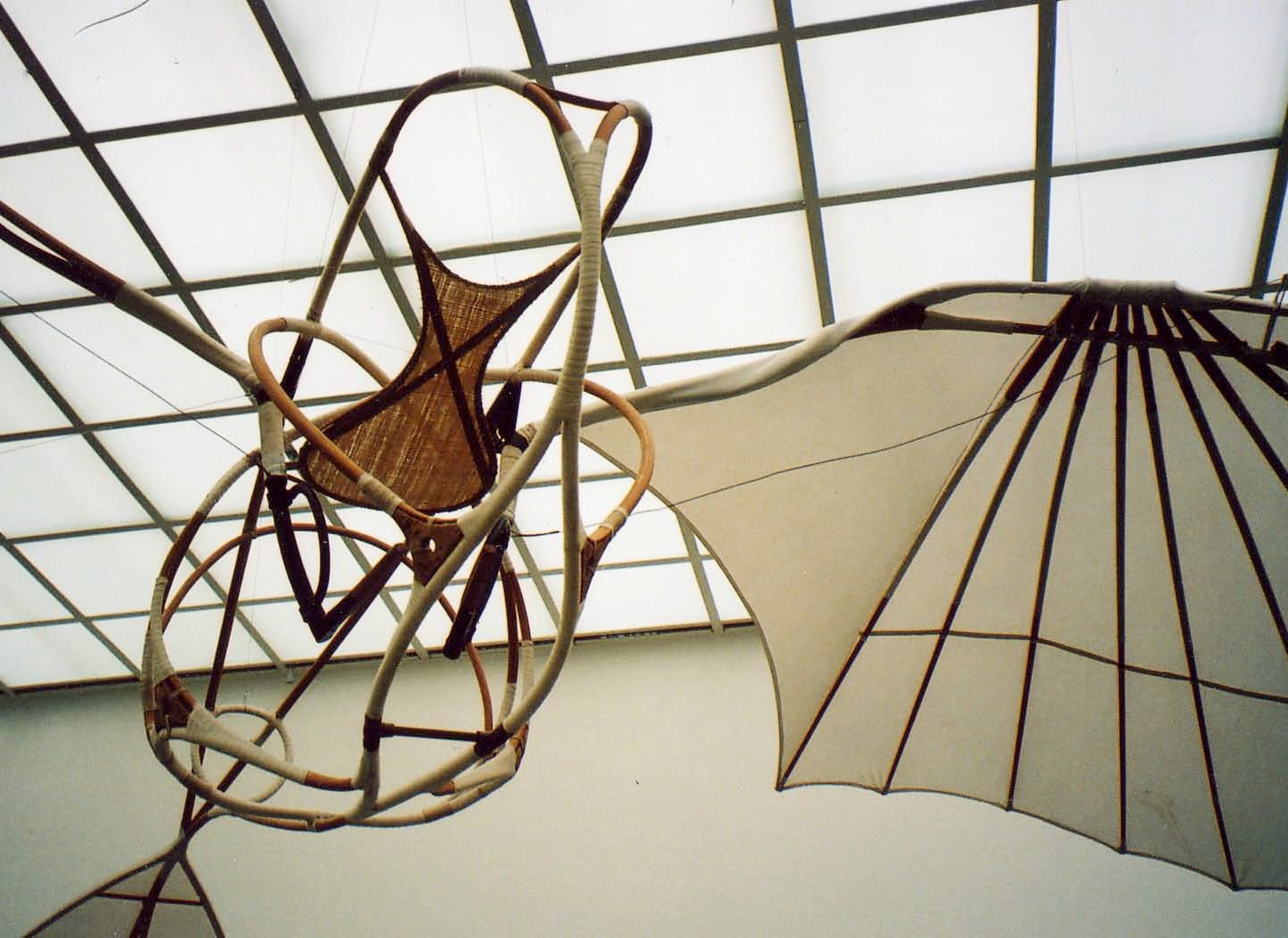
Ben Ruhe
ABOVE: A haunting Vladamir Tatlin aerial sculpture in the main hall of the Zeppelin Museum in Friedrichshafen pays tribute to the German aviation pioneer Otto Lilienthal. Lilienthal was killed flying one of his pioneering gliders. Tatlin, a Russian, was a major Futurist artist.
SPOTLIGHT ON AN AMERICAN FLIGHT PIONEER
ENTHUSIAST BRINGS OLD KITE BACK TO LIFE
Ben Ruhe
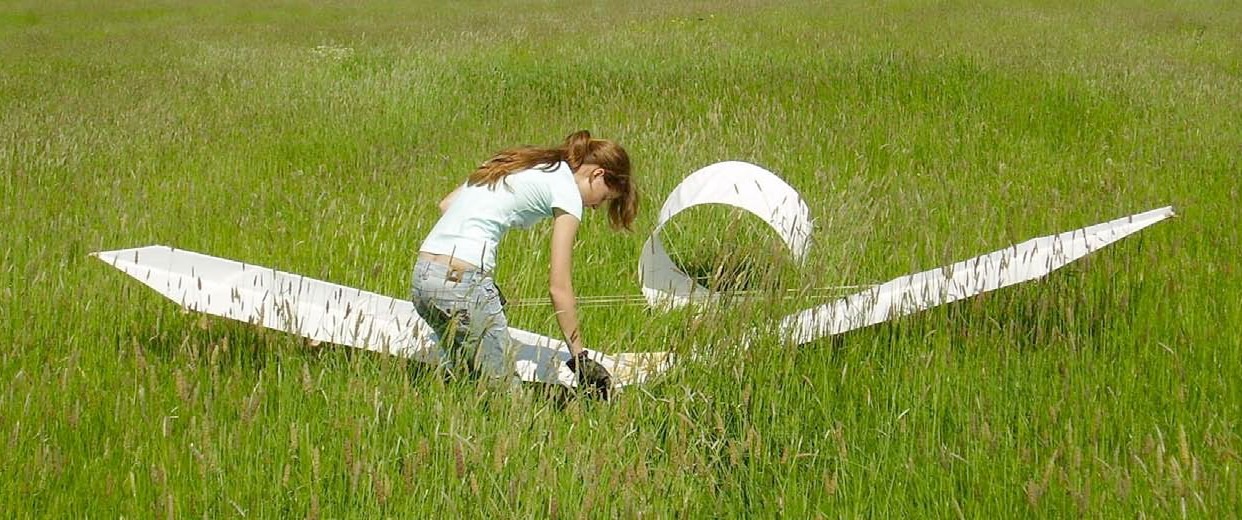
Jan Westerink
A student of early historical kites, Jan Westerink of Zutphen, Holland, was searching patent databases when he found a design by Matthew B. Sellers, an American flight pioneer, that caught his fancy. The kite has wings like a glider and an eye-catching tubular tail. It was patented in 1908, meaning its 100th anniversary was due this year.
Westerink, a former industrial designer turned handicraft teacher who has built replicas of several dozen largely unknown kites from the first half of the last century, decided to build this one. Patent sheets not specifying measurements or even materials, he guessed at the size and used bamboo and undyed cotton cloth in its construction. Instead of using hemp line, as Sellers almost certainly did, Westerink instead substituted nylon line. He knew
ABOVE: Bregje Westerink attends the replica Matthew Sellers kite built and flown by her father. Her usual role is photographer for his First Kites Action Research Team.
NEXT PAGE: The replica Sellers kite makes its very successful maiden flight in the 100th anniversary year of its patenting in America. The scene is Zutphen, Holland.
his professional nylon winder would give him the best control, particularly useful for an object with unknown flying properties.
Westerink constructed the flier, carted it to the Historical Kite Symposium meeting in Germany to show to fellow aficionados, then took it home and flew it for the first time, with daughter Bregje, 13, taking video and photos. “She’s the most enthusiastic kiter of my four children,” says Westerink. “I’ve named her official photographer for my First Kites Action Research Team.”
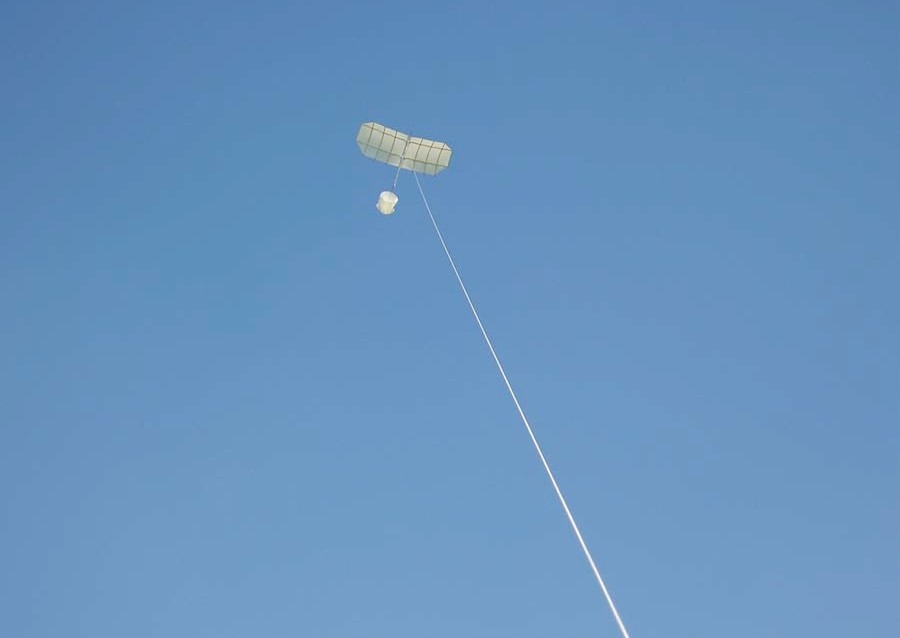
Jan Westerink

Bregje Westerink
The maiden test flight went off flawlessly. Flown without a bridle and only a rope construction to connect it to the flying line, the kite rose easily in a 10 mile-an-hour wind and flight was stable. “The tube tail nicely corrected the kite in relation to the wind force,” says Westerink. “It was a great sensation to have this big kite with 13-foot wingspan and 54 square feet of surface at the end of my flying line. Sometimes it really pulled, other times it shook a little as the tail corrected the flying angle. Flying was great fun.”
Just who was this Matthew Sellers who designed and patented the unusual kite? Research reveals he was one of the many dozens of people at the turn of the last century who worked obsessively to invent the airplane, a goal achieved by the Wright brothers in 1903.
Born into a rich Kentucky family, Sellers took a Harvard law degree, and then, continuing a childhood fascination with flight, devoted himself to basic aeronautical research. Beginning about 1889, he progressed from balloons and small flying models and kites to wind-tunnel testing of airfoils, then on to designing, building and flying a variety of weight-shifting gliders from which he hung suspended. He corresponded with other notable aviation pioneers such as Langley and Chanute, contributed to technical journals such as Scientific American, and received several patents for his kite and airplane designs.
By 1908 when the kite design Westerink replicated was patented, Sellers had already built several large four-wing gliders with enormous lift. When he added an 8 horsepower Dutheil-Chalmers engine, landing gear, and flight controls to his Quadraplane No. 6, he created a powered aircraft in which he was able to make 180- degree turns and flights up to a quarter mile
in length. It was the world’s first functioning aircraft to use retractable landing gear. Its first flight on December 28, 1908 was the earliest powered airplane flight in Kentucky.
Using the family’s Blakemore estate outside Lexington as a home base and working mostly independently, Sellers continued his aviation experiments until an employee was killed by a propeller in 1911. Filled with remorse, Sellers left the state for good, returning only once to visit three decades later. Demonstrating his aircraft in New York in 1914, Sellers himself was seriously injured in a crash. He ceased flying and gradually turned his attention to other endeavors.
But Sellers’ expertise in aeronautics was by now well known and he was appointed to a federal aeronautics commission chaired by the inventor Thomas Edison. Sellers died in 1932 and his achievements were all but forgotten until aviation historians became interested and his family gave his archive to the Smithsonian. His two sons worked with local citizenry to preserve Blakemore as a National Parks historic property. Blakemore subsequently burned down, but a workshop including a wind tunnel in an outbuilding was saved and along with archival documentation eventually found a home in the Aviation Museum of Kentucky in Lexington, where it can be viewed today.
Westerink sums up: “The Sellers kite wasn’t the most beautiful kite I found when searching the not so easily accessible sources on historic kites on the Web, but since I’m interested in unknown ideas from the early builders and experimenters, I feel I have to build their kites. Even if ugly, imperfect, and bad-flying, these kites show the design struggle the early builders went through. Building their kites permits me to experience kite history from a century ago as closely as possible.”
A GERMAN KITE COLLECTOR’S TROVE
Ben Ruhe
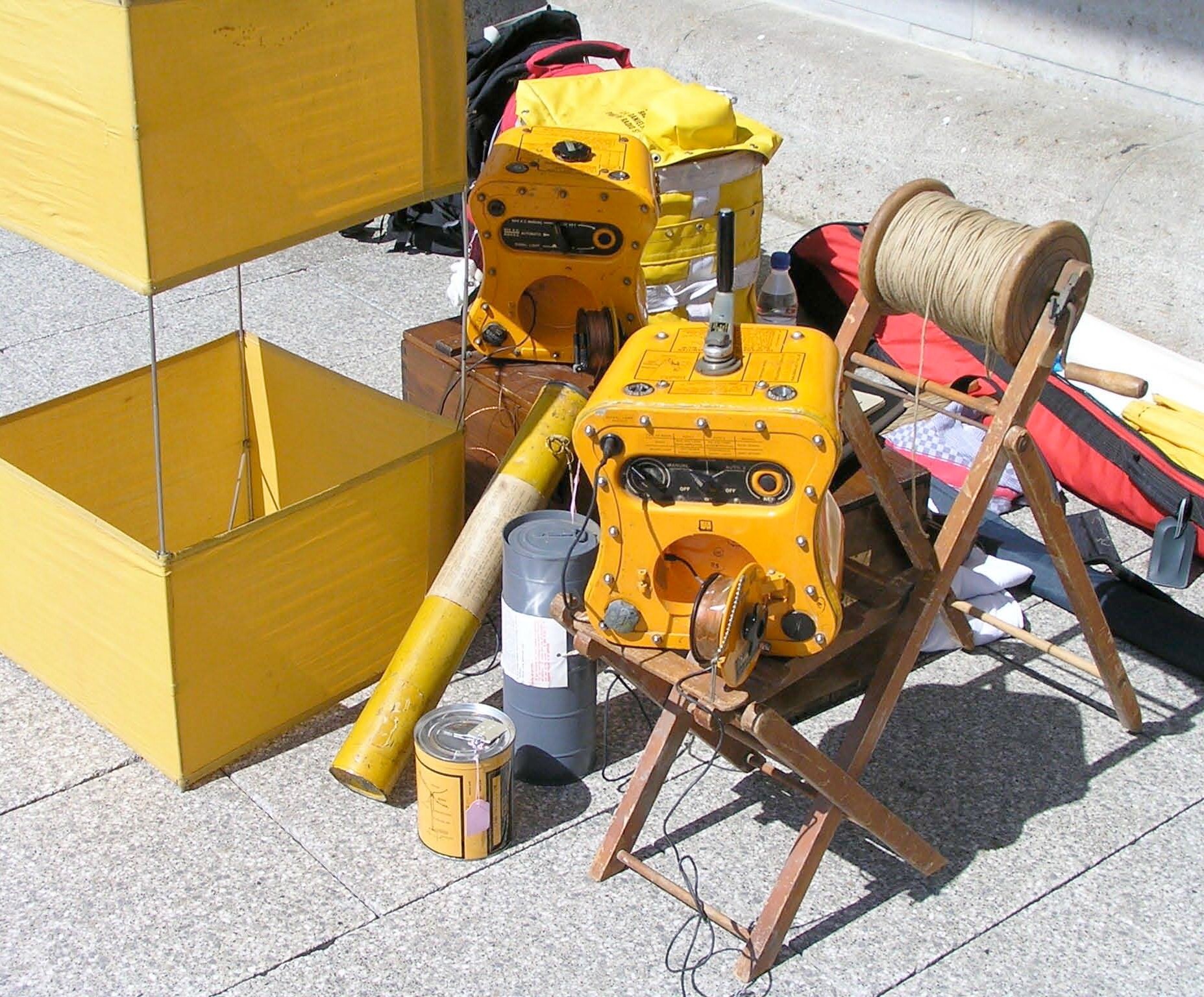
Ulli Draheim
A stint in Texas while on active duty with the German air force got Ulli Draheim turned on to things American, so when he later took up collecting old, historic kites he naturally turned to Gibson Girl kites and Paul Garber target kites from the World War II period. Both are American icons. He’s got 80 of the Gibson Girls, along with the gear that goes with them – eight radio transmitters plus generators, tech manuals, lines, extra parts. The Gibson rigs are colored a high visibility yellow, a color Draheim adores. His car is bright yellow. Produced by the U.S. and its ally Britain, all his Boxkite Gibsons have instructions in English except for one oddity, a Gibson Girl with instructions in Russian. Since Russia was a wartime ally, this trophy kite is not a complete surprise, although its history remains unknown. Draheim acquired the oddity at eBay auction.
Gibson Girls were stocked on emergency life rafts used by downed airmen. They raised a radio aerial for summoning help. Curiously, the transmitter gave the kite its name. A rectangular box with narrow waist, it suggested a full-skirted Victorian Age woman, the beauty drawn by illustrator Charles Dana Gibson.
Draheim has Garbers, a two-line early stunt kite, with both German and Japanese aircraft images on the wings. The target kite was used to train antiaircraft gunners aboard ship in coping with the abrupt twists and turns of acrobatic enemy aircraft.
A second focus of Draheim’s collecting is pre-World War I French kites. He has 30 of them including an original Aigloplan from 1909, a Planeur RL, a Roi del Airs.
From there his collecting ranges far and wide, with eight English Atalantas from Pancheff, German Steiff Roloplans, and an assortment of 80 Rokakus from all over. He
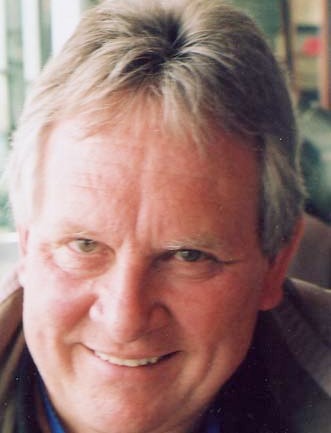
Ben Ruhe
ABOVE: Ulli Draheim.
PREVIOUS PAGE: A small portion of Ulli Draheim’s Gibson Girl kite collection from World War II. In addition to kites, it includes radio transmitters, line, instruction manuals, and repair kits.
doesn’t fight them, he just likes flying them.
“I also collect everything about kites I can get my hands on – books, cards, articles, even finger hoods for flying,” he says. “I spend a lot of energy on this. I like to do research and learn things nobody else knows. Crazy Ulli, they call me. Kites are my way to keep the feeling of a child, the way to live forever.”
Describing himself as too impatient and hyperactive to bother with building more than the occasional kite, the small, muscular German whose vocation is health inspection work in Gilhon, Lower Saxony, has built up his collection through purchases, trades, gifts. He says, though, there is a single fly in his collecting ointment – “My wife won’t permit kites on the ground floor of our house, her floor. No kite talk there either. All my treasures are on the top floor.” He says he’s at ease with this arrangement. A booming, ambiguous laugh follows.
STUDYING WEATHER STATIONS IN SCANDINAVIA
Ben Ruhe
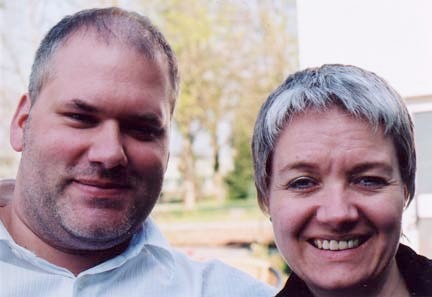
Ben Ruhe
ABOVE: Dorte and Frank Schulz.
NEXT PAGE, TOP: German scientists studying the weather in Greenland during a 1906-8 expedition there store a kite in a kind of simple garage built of wooden planking. Protection against wind and snow was achieved without
dissembling the kite.
NEXT PAGE, BOTTOM: Arctic explorer and meteorologist Alfred Wegener prepares to fly a Diamond Boxkite during a German expedition to Greenland in 1906-8. The kite carried instruments used to monitor the weather.
DORTE AND FRANK SCHULZ’S WEBSITE WWW.SCANDINAVIAN-KITES.DE
Encouraged by a modest Drachen Foundation grant, historical kite enthusiasts Frank and Dorte Schulz, of Buxtehude, Germany, began researching early Scandinavian utilitarian kite – kites used for meteorological, military and amusement purposes. They planned to combine their love of Scandinavian holidays with a bit of scholarly study, Frank’s long-time interest.
They soon focused on weather kite research alone as being a big enough challenge to study and found it in fact to be a much larger field than they suspected. Now, after three years, they have compiled more than a yard of academic files and pictures, plus 20 books on the subject, and turned up excellent leads to unknown or forgotten projects from a century ago. They see the study going on for years.
Either with personal visits or via postal correspondence and e-mail, the couple has so far documented turn-of-the-last century weather kite studies in Denmark, Finland, Norway and Greenland. They discovered that this early research was basically carried out by a small number of rich men who financed and coordinated the work in Europe and America. Names like de Bort, Rotch (from Harvard’s Blue Hill, near Boston), the Wegener brothers Karl and Alfred, Kusnetsov and Amundsen. Systematizing global weather studies was the goal of these men. These studies continued until the airplane replaced the kite and balloon as weather research tools.
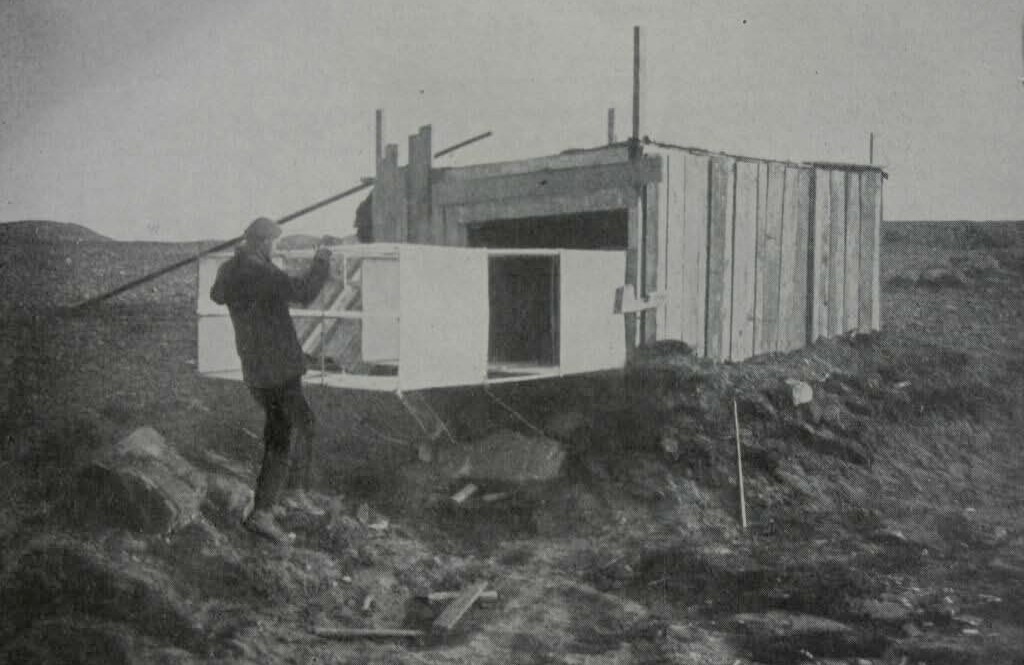
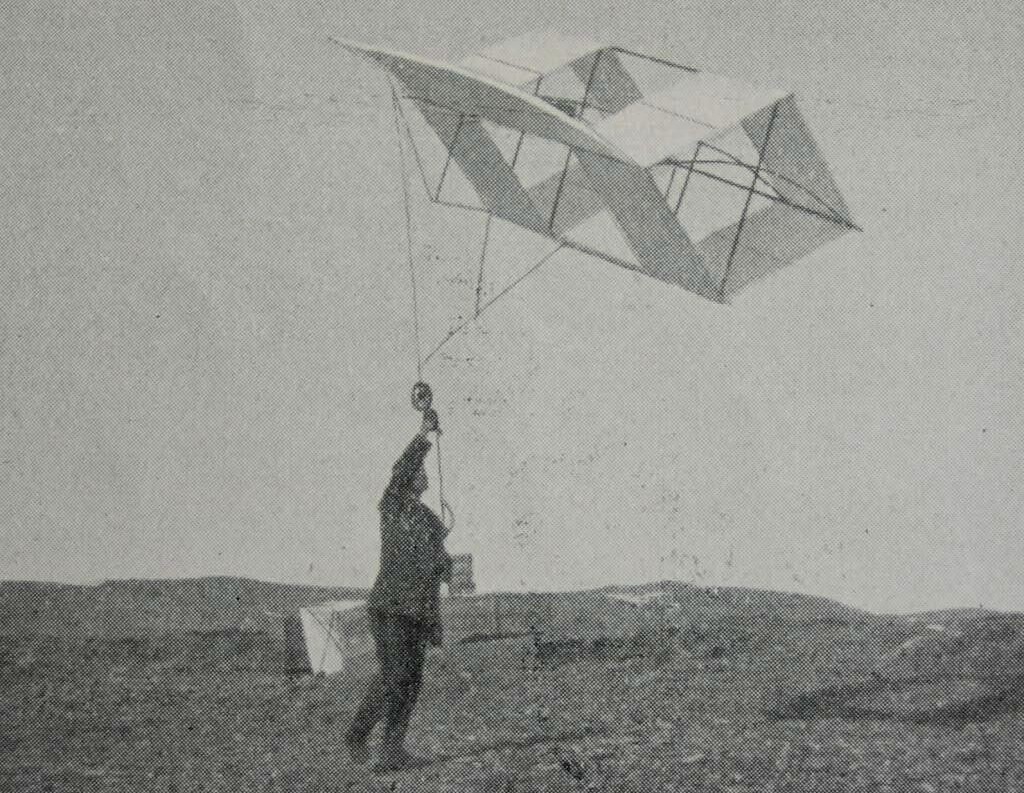
Frank Schulz
The couple’s Norwegian study focused on Roald Amundsen, famed as the first person to reach the South Pole. The German Kurt Wegener led research in polar Spitzbergen in 1912-3. A weather station at Viborg, Denmark, did its studies in 1902-4. It was directed and financed by the Frenchman Teisserenc de Bort, who earlier used high flying unmanned balloons to discover the stratosphere. Kites were routinely flown as high as 16,000 feet at Viborg. The Schulzes put together 110 pages of documentation on this station alone.
Germans made three separate weather expeditions to Greenland. Because of its vast size and difficult climate, they used boats and established short-term camps on shore, before moving on to new sites. Expeditions were made in 1906-8, in 1913, and again in the early 1930s.
A student of polar air circulation, Alfred Wegener led these forays. They helped lead him to the discovery of the jet stream. Wegener became globally renowned for his theory of continental drift, only proven two decades after his death in 1931 in Greenland. The continental drift concept, which Wegener formulated from his climate, land features, and fossil studies, led directly to the theory of plate tectonics and Wegener was quickly recognized as a founding father of one of the major scientific revolutions of the 20th century.
The earliest weather station so far investigated by the Schulzes was located at Llmala, Finland, near Helsinki, begun in 1900 and operated through 1925, except for a World War I break. It was financed by the Russian government and directed at one point by a Russian named Kutznetsov, inventor of the weather kite that bears his name.
Although German-speaking, Frank and Dorte found their reasonably fluent English was the language most useful to them in their research. Dorte, in addition, contributed knowledge of Danish, which works well in Norway. The couple found useful material in archives, museums, private hands, and at the Danish Meteorological Institute in Copenhagen. “Many of the people we contacted were surprised someone was interested in this rather obscure subject of weather kite stations,” says Frank. “At Viborg, we discovered two houses that had been used by weather staff, then when vacated were converted to family homes. We were able to interview the families living there now and tell them of this interesting past.”
Says Dorte: “We met fascinating people, made an opening into unknown cultures, uncovered a lot of interesting interrelationships. It’s been fun. We’re sticking with our project for the foreseeable future.”
KITES AS COLLECTOR’S ITEMS
Douwe Jan Joustra
Historical kites are cross-cultural phenomena. They represent science, civil and military use – photography, anthropology, arts, religion, joy and playtime. This makes them interesting for historical research and, of course, collecting.
In this article, I will share some of my insights on different aspects of historical kites, and in the second half I will present a first version of a Code of Conduct.
THE ART OF KITE COLLECTING, STUDY AND SHARING INFORMATION
There is a rather small group of serious kite collectors. They have their collections at home or in a few cases in small museums or institutions like Drachen Foundation in Seattle. Kite museums take care of collections that have a broad variety of ancient, historical and contemporary kites. In the Asian countries, these collections seem to have a significant anthropological value. Most collections are small, and owned and taken care of by individuals that have a keen personal interest in kites. Diversity in quality and maintenance seems to characterize these collections.
The group of (semi-)professional kite collectors is even smaller. We all know of some of these: Drachen Foundation, the German Drachen Archiv, the Skinner collection. In Europe, the collections of Desimpelaere, Chapman, Draheim and Sauve are well known. They all combine collecting with research: in the field and in archives, museums and personal collections of other kite-related persons. The way they document, repair or preserve their kites is (almost) professional. It seems that this group is important for the diffusion of knowledge and craftsmanship.
Then there is the growing group of enthusiastic people who have interest in old kites. This interest has different origins: to recreate the toys from their childhood, curiosity about technical history or other personal motivations. They start collecting in their own neighborhood and are looking around for more. This group is growing fast and gives more and more competition to the (semi-)professionals.
Sometimes we tend to be over-enthusiastic or just victim to our own ideas. Every collector needs to know what may be expected from a “good” collector. Also, we need to have an idea about the ways old kites and kite materials can be restored, without damaging the historical value.
Recently I heard a few things that could or have happened:
- Unauthorized use of photographs and building plans
- “Saving” collections from a museum
- Inadequate restoration of historical kites
- Closing collections for other kiters
- Non-communication on archives and research performed
So now we could try to focus on the negative side of this, but that is not a future- oriented way of thinking. My suggestion is that we think about a Code of Conduct for historical kites and kite collecting.
First, I will give some insights that I have about the way the historical kite community works. Maybe you share these ideas or maybe you see things differently: both can be a good basis for further debate on the ways we all should conduct ourselves when working with historical kites.
NEW WAYS OF COLLECTING
Kite collecting seemed to be a result of
patience, good research, building up a network and sometimes taking care of collections of kiters who passed away. This all still is happening. The greatest joy came from treasures that were found in the attic or garage of an old house. That was sometimes a lucky shot, but often the result of thorough research.
Now we see new ways of collecting. The kite community found eBay and other second hand trade sites on the internet. If you want a Gibson Girl kite, dated around WWII, you can be the proud owner within a few days. You just need a computer, credit card and a postal address. Your flea market is worldwide!
The result is that many people have something, and dispersion is the effect: lots of small collections with a great diversity.
RELEVANCE OF KITES
As said in the introduction, there is a growing acknowledgement of kites as:
- Cultural phenomena (hobby, arts)
- Scientific historical artifact (meteorology)
- Technical curiosity (patents)
- Political specialty (military, records)
- Anthropological interest (fishing, religious)
This relevance has not yet resulted in programmed scientific research. Some technical aspects have been and still are researched by institutes like NASA and some polytechnic universities. Most research was done on the capacity of flexible wings for parachutes or parasailing. Nowadays the focus is found in the promise that kites have as a resource for renewable energy (directly, like the “LadderMill” of Wubbo Ockels or indirectly, like the new kite sails for ships).
It would be of great historical value to do
research on several of the aspects that are mentioned. This needs, in my opinion, programming of research. That would make objectives more clear and could help to gain access to the scientific world. At the end it would help us, the amateurs, to get more focus in our work.
KITE CONSCIOUSNESS
It seems that kite consciousness is growing around the world. This is visible in the number of historical surveys (growing), the group of people who try to make reconstructions (growing) and the number of initiatives on sharing knowledge (growing).
At the same moment you can see that commercial relevance changes daily – now all energy goes to kite-boarding on water, snow or wheels –, real scientific relevance is decreasing. No real function is connected to the use of kites, unlike the status for meteorological research about 100 years ago. Most disturbing is the way people look at kites; kite-related innovations are still seen as non-relevant. Rogallo recognized this problem: can you make a toy into a serious instrument? The other way around is more naturally accepted. We still have this problem in renewable energy and other fields of interest.
KITE RESEARCH
Most of the actual research on kites and kite history is performed by amateurs. The quality of the research is high in most cases. There is the possibility of getting a small grant if the research is on a field that has not been exploited before. Drachen Foundation gives these grants every year.
That brings us also to the question of whether we are primarily collectors or researchers. In my opinion, not everyone
wants to choose to be one of those. It has to do with character, enjoyment and maybe ideals. My opinion is that each kiter should make a choice for him or herself. Kites are interesting for study, but also nice to build and to fly.
COMMUNITY
Then there is a key issue that has to do with kiters as a community. The kite community has a common interest in sharing ideas, knowledge and experiences, because that is the basis on which we can build a learning network. We lack the resources for professional and scientific research at a reasonable scale. So what we need is the power of being within a community of persons who all have their own competences and the willingness to share and learn.
The question in historical research is often, “Who is owner of a design or source?” Ownership is defined mostly in a protective way. As an ecologist, I know that protection is a continuous fight and it is an uphill battle. In some stages, it can be wise to protect ideas or designs from a commercial point of view. That is the only moment that I think it could be reasonable not to share everything you know. But even then openness brings more innovations then a closed laboratory situation. Innovations and a shared body of knowledge will grow best in an open source community!
HISTORICAL KITES: CODE OF CONDUCT
Not so long ago, I read an article in Kite Lines. It was dated autumn 1988 and gave the commandments that are relevant for a kite flier. The most meaningful one was: kites are made to fly and should be flown (as often as possible). In general this is the truth for kites and kiters. For historical kites we do need to look around for some extra
agreements. This is a proposal for a real Code of Conduct on historical kites. It involves themes such as: Collection, Restoration, Research, Learning, Education and Ownership. Each of these themes includes aspects that can be seen as dos and don’ts for the historical kite community. Professionals and amateurs should see this as a gentlemen’s agreement.
We need to discuss this code in the historical kite community. Points of discussion could be:
-
- Can we ask of private collectors that their collections should be accessible? Maybe this point should be rephrased?
- Re-creation: Is anyone free to build copies in the way they want to? Maybe we should say that, for museums, re-creation in original materials is likely.
- Publishing results: As far the author is able to find a proper way of publishing, he or she has the copyrights and the right to publish. This is to seen as a wish and not as a commandment.
Personally, I think that most elements of this code of conduct are no less than logical for any person interested in Historical Kites. Just one element involves more than “good practice” and that is the new idea of being an “open source community”. This idea is grounded in the belief that sharing knowledge and the creation of social learning processes brings (new) quality.
Comments on this Code of Conduct are welcome.
CODE OF CONDUCT
ON HISTORICAL KITES AND KITE HISTORY
Collection
Public collections should stay public
Private collections are private and can be open at request
Acquisitions should be found in the public domain
Collectable items will be handled with respect
Restoration
Restoration requires professionalism Re-creation needs to be done carefully
Original material and original craftsmanship is the basis to work on
Research
Respect the source for future research Share the results
Keep to scientific standards
Learning
Help on quality of “body of knowledge” Be open sourced (through reflection and interaction learning gains quality)
Be part of a learning network
Education
Enhance people’s competences for kiting Allow formal and informal education on kiting Share knowledge for growing network of involved parties
Ownership
Respect people’s efforts in enhancing the “body of knowledge”
Give credits to the one who earns them Intellectual ownership is to be respected
HISTORICAL KITE WORKSHOP APELDOORN 2006
DOUWE JAN JOUSTRA
TWO WEEKS AT THE HUI
Scott Skinner & Susan Robb

Scott Skinner
ABOVE: Artist Susan Robb hikes at Swinging Bridges to investigate local foliage.
NEXT PAGE: Cyanotypes sit in the Maui sun while Susan’s notebook tracks their time exposed.
You won’t find a better place to work than Maui’s Hui No’eau Visual Arts Center: about two thousand feet up the slope of Haleakala volcano, it looks down over the West Maui mountains and the Pacific. The Hui and Drachen Foundation brought together noted artist Susan Robb and kite maker Scott Skinner to create kites in celebration of a summer of kites at the Hui.
WWW.HUINOEAU.COM WWW.SUSANROBB.COM
SCOTT: Hui Press director Paul Mullowney made his staff and studio space available to us, as well as to Nobuhiko Yoshizumi, for the duration of the two-week program. Yoshizumi- san led children’s workshops for the first full week in Maui, while Susan planned her approach for her kites and I started framing artists’ kites for exhibition.
As a precursor to our visit to Maui, the Drachen Foundation furnished the Hui with kite kits to be decorated by local Maui artists. The kits, developed by Yoshizumi-san, were both kaku- dako/buka-dako and rokkaku/sode, so artists had several formats from which to choose. Several artists had worked with Yoshizumi-san two years prior, and many attended a full-day workshop to learn how to frame and bridle their kites. Others were unable to attend or were off-island artists, so their kites were finished during the first week by Yoshizumi-san and myself.

Katie Davis
Participation by island artists was fantastic, as there were fine examples of woodblock prints, watercolor, paper appliqué, and other artistic treatments. Kites in original formats or with exceptional artwork were taken by Yoshizumi-san to be structured in unique and beautiful ways, while I handled the very beautiful straightforward examples. Over forty kites were prepared for exhibition.
SUSAN: Before traveling to Maui, Scott and I discussed possible directions for the kites. Since my work is directed by the connection between culture and nature, I became particularly interested in Polynesian leaf kites – kites made from leaves and used for fishing. I used this as a starting point in deciding what kinds of imagery the kites might contain.
In order to gain an understanding of the island my first step was to investigate the flora and fauna of Maui; hiking in the pine forests high on Haleakala, to the more varied and lush vegetation at a location called Swinging Bridges, to the underwater coral landscapes found while snorkeling.
During these hikes I became interested in Ahu, traditional stone devotional structures placed at particularly meaningful locations. However, after a false start using Ahu imagery and photogravure technique, I turned my interest towards the island’s abundant flora and decided to create cyanotype photograms using the plants themselves.
I started by selecting specimens of particular beauty or interesting shape on my daily walk to the Hui center. After this selection process and a few days spent coating with the cyanotype emulsion a variety of papers (including washi coated in persimmon juice and a Thai paper embedded with leaves), Hui Press assistant Casey and I began work in earnest on exposing and developing the cyanotypes by the end of that first week, and were into heavy production early in the second.
SCOTT: By that time, I had cleared my workspace of the local kites and was ready to make Susan’s images into kites. Most of the cyanotypes were created on white washi, so the resulting images were high-

Katie Davis

Katie Davis
PREVIOUS PAGE: “Women, Know Your Place!” kite by
Maui artist Caroline Killhour.
ABOVE: Susan Robb rinses a cyanotype, which Scott
Skinner will later craft into a kite.
NEXT PAGE: Cyanotype kites and island artist kites
hang on exhibit at the Hui.
contrast dark blue and white, with beautiful subtleties in the white plant images. Since the Hawaiian Islands share a long history of kites with the island cultures throughout Polynesia, I felt it important that our kites hearken back to that history. The resulting kite shapes were basic ones, resembling leaf kites, the geometric forms of Maori kites, and fish or bird forms. Time was the critical limiting factor, forcing me and Yoshizumi to use prepared kite-kit spars. This limited the size of the finished product, but very little else. Yoshizumi-san, demonstrating his extraordinary skill, finished two large rectangular cyanotypes on persimmon paper, with fine bamboo from a 100+ year- old bamboo screen. These were both laminated with a second layer of paper by Paul, Casey and Nicole, who have the exceptional skills to accomplish the operation. I worked exclusively on Susan’s
“canvasses” for three solid days, while Yoshizumi-san finished several artists’ kites. As the Hui staff installed the artists’ kites, we spent Friday night installing Susan’s.
SUSAN: I wanted the installation to be more then just “kites on the wall.” I wanted the works to give a sense of denseness of vegetation, of vines wrapping, filtered sunlight, and complex textures. The room we installed in, with its two walls of windows, helped invoke some of this sense. A finishing design element, a 30+ foot long tail created from many small images of a single section of vine was strung high on the ceiling and added to the feeling of a tropical forest.
SCOTT: The two installations provided the Hui and Maui with an exceptional mix of the expected and unexpected: recognizable images on kites from their favorite artists, wonderful examples from off-island invited artists, and the wide variety of Susan and my cyanotype kites.
On hand to capture the week’s magic was Katie Davis from the Drachen Foundation.
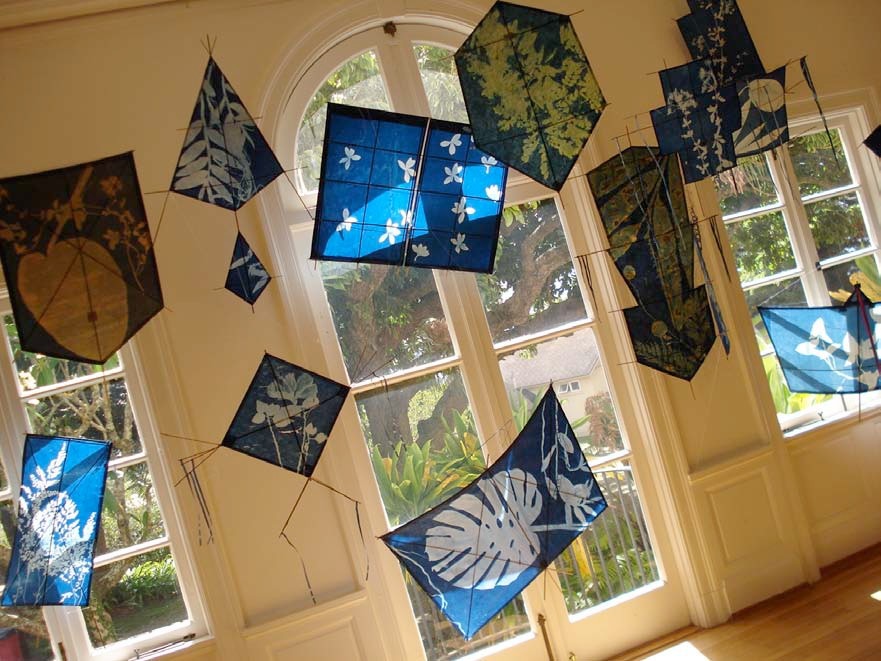
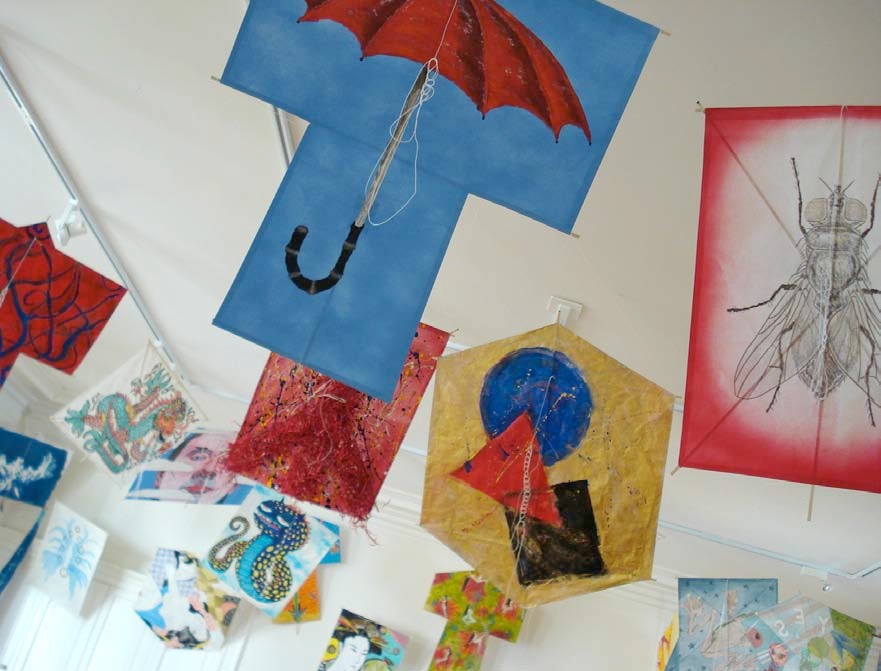
Katie Davis

Katie Davis

Katie Davis Scott Skinner
PREVIOUS PAGE: Susan Robb’s “Black Toobs.”
ABOVE: Kite masters Scott Skinner and Nobuhiko Yoshizumi turn Susan Robb’s cyanotypes into kites.
NEXT PAGE: Persimmon paper kites with bamboo-plant images, complemented by fine bamboo frames.
Katie shot hours of video footage as well as hundreds of still images, both of which will be used by Drachen to promote future adult workshops and exhibits. Katie also edited a wonderful three-minute video piece that was the hit of the exhibit opening. The cyanotype-to-paper-to-kite process was shown in an interesting way for gallery- goers enjoying both Hui exhibits.
The week’s finale was a public kite fly on the Hui grounds with many families coming down the hill from Makawao’s Fourth of July Parade. I heard nothing but positive feedback, as many who flew kites had never before come to the Hui. Wind was strong and turbulent and forced Susan’s “Black Toobs” to be bouncing, squirming, horizontal black snakes. I preferred to think of them as my own personal wind indicators: extravagant, to say the least! I
was pleased to see the number of local artists who threw caution – and their kites – to the wind and flew their creations in the challenging environment. Kite-magic was on display as adults and children shared the skies over the Hui.
KITES OF THE HUI
SCOTT: Knowing that we’d be making kites at the Hui, I felt they should be reminiscent of the many forms of leaf kites found throughout Polynesia. Hawaii has hieroglyphs of kites and it is not unreasonable to assume that kites have been a part of island life for hundreds of years. Recalling leaf kites from Indonesia and the Maori kites of New Zealand, I felt that our kites should be simple forms, with universal themes: humans in flight, celebrations of nature, and geometric shapes. It is impossible for me to make paper kites that are not influenced by Japanese kite forms, but I tried hard to make shapes and structures that were more primitive: an evolutionary voyage along the shores of island kite making.
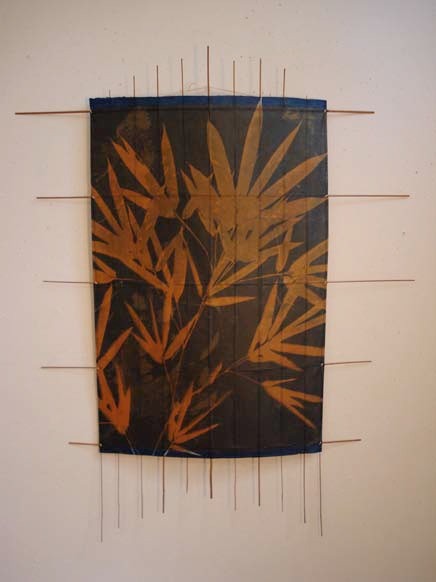
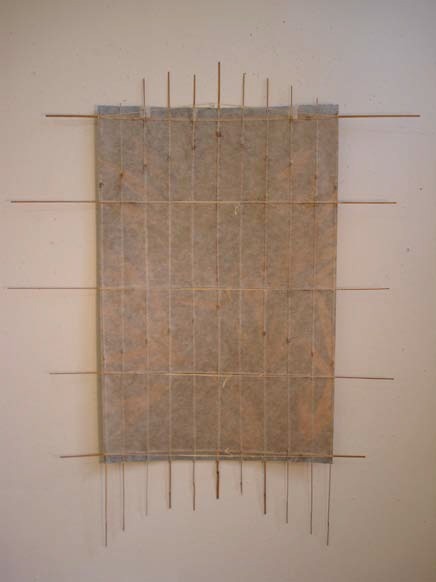

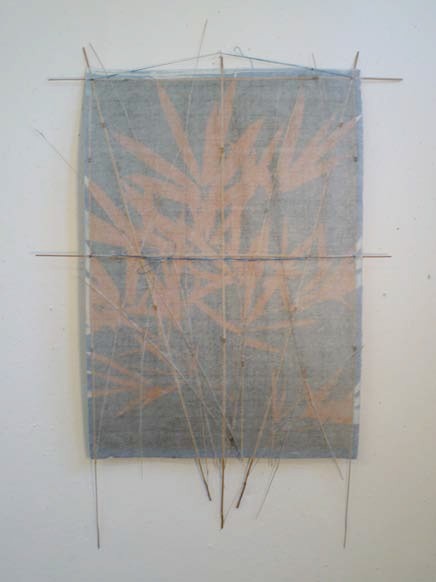
Katie Davis
Every cyanotype was a beautiful canvas that I tried to give unique care. Some were small and delicate, others big and bold, but all possessed a beauty that could be emphasized by the kite around it. Most of the early kites were smaller-format, and they lent themselves to human-like forms or fish and bird forms. They featured fine bamboo work, made easier by the hand- split bamboo shade, purchased in Kyoto for exactly this kind of work. The 100-year-old patina on this bamboo complemented the simple shapes of these beautiful kites.
SUSAN: Since I typically create large scale, often interactive, sculptures and installations, working in 2D presented a surprising challenge for me. Letting go of the final results and allowing Scott to ply his skill and knowledge was difficult for me, but I was thrilled with the outcome. Scott and I talked about the general shape for each cyanotype and I could clearly see that Scott spent time understanding the formal needs of each image.
SCOTT: As Susan’s output increased, the size of her results increased. This gave me the pleasing challenge of finding unique ways to frame these larger images. Many turned into horizontal, hexagonal kites, while others I chose to split in two and frame into a single kite. The resulting kites, in simple geometric forms, remind us of the many leaves with open space within their forms. In the sky they will add another, softer shade of blue to the cyanotype images. Together, we made over twenty kites. Several will be sold, others will become a Drachen Foundation traveling exhibit, and several will stay in the archives of the Hui.
Yoshizumi Two-in-One Kite Kits are available for purchase online at:
DRACHENSTORE.EASYSTORECREATOR.NET
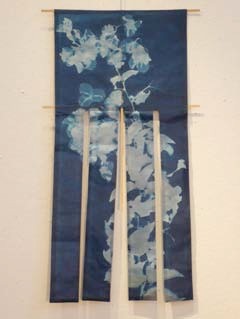
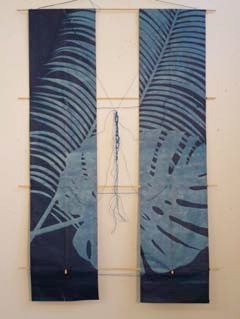

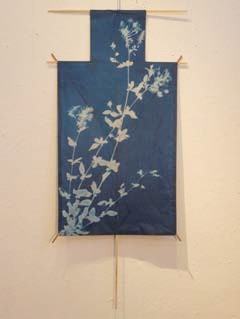
Katie Davis
TO MAKE THE MOST OF WIND POWER, GO FLY A KITE
Michael Brooks
New Scientist Magazine
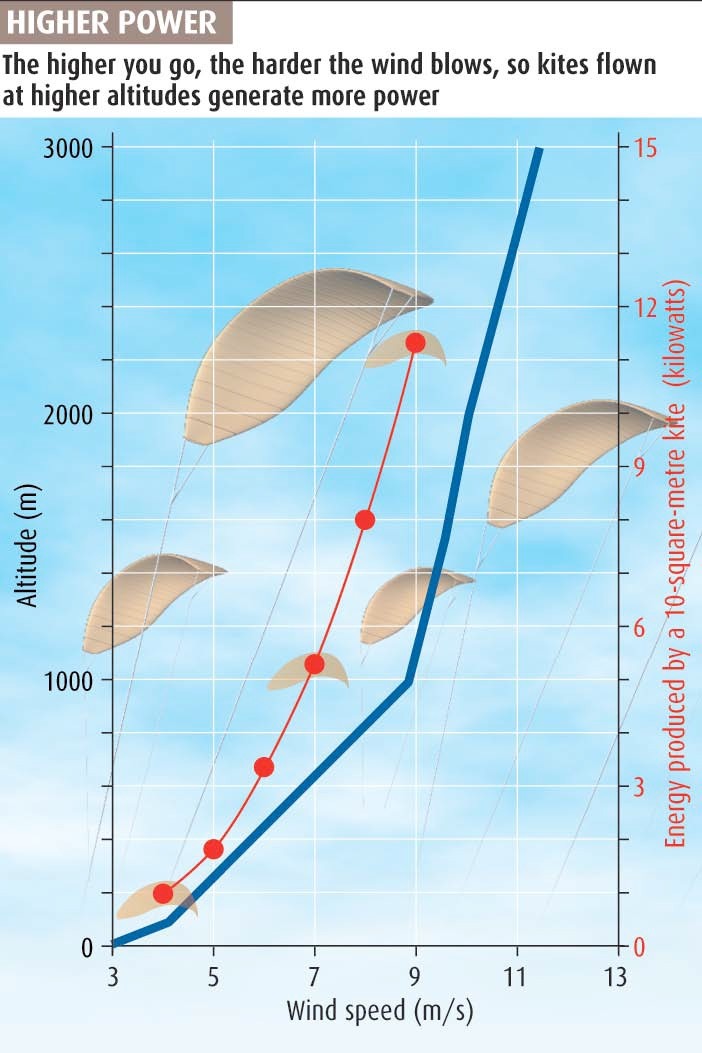
INTRODUCTION BY DAVE LANG
In 2002, the Drachen Foundation awarded me a grant to perform some basic explorations in the use of kites to generate useful electrical power. This grant was originally predicated on furthering explorations of the LadderMill invention of Professor (and one time astronaut) Wubbo Ockels. The LadderMill was envisioned to have the potential to supply industrial levels of power. My grant proposal came about through simulation-related liaisons between myself and Professor Ockels.
As my work proceeded on the grant, it became ever clearer that this was but one idea in a potentially vast subject extending well beyond our original focus, and a subject worth examining in a more general fashion. To this end, the grant effort was somewhat re-focused on surveying the entire field of kite power generation. This resulted in a report summarizing our examination of potential schemes for generating power, along with an attempt to categorize and evaluate the pros and cons of known schemes.
While this original report is now beginning to show signs of aging, it nevertheless has stimulated extensive dialog between the Drachen Foundation and numerous people around the world pursuing kite power generation; furthermore, Drachen upon finding itself as a point of contact between many individuals, has been able to function as a hub of connect amongst those of like-mind who seek liaisons to form larger and more consolidated efforts.
As a result Drachen has witnessed and encouraged efforts that have encompassed many of the schemes presented in that original report, as well as new ones. With the advent of the current rising world consciousness of the crisis of fossil fuel dependency, this field is becoming ever more active, with many new people entering into the fray, ranging from the individual entrepreneur to large and significantly funded organizations.
Drachen, working to further this field, organized and convened the first international “Kite Sailing” conference in Seattle, well attended by world leaders in the practice and design of power (i.e. “traction”) kites. The symbiosis between the recreational kiter and electrical power kite communities was obvious and profitable for all; the attendees represented the entire spectrum of participants ranging from the highly theoretical ”academicians and engineers” to the highly accomplished “thrill seeker.” Likely in the future, such an event will be repeated.
This field is wide open, exciting to both the individual (who may brilliantly visualize the next great breakthrough), as well as the highly developed organization (methodically moving towards a goal). The rewards are potentially very high, both in remuneration and satisfaction of making a profound contribution to the people of the world by moving away from fossil fuel.
The following article is presented because it represents a concise summary of many of the efforts currently underway.
DAVE LANG
“There are territories traversed by this invisible power rarely explored, where sail was never unfurled, where mechanism was never introduced, and where invention never spread a successful pinion. These are the higher regions of the atmosphere where, when the winds sleep below, there are powerful and steady currents of air rapidly floating. These have hitherto passed almost unnoticed by the dwellers upon earth, because their lofty career placed them far above human subjection.”
Not any more. When the English inventor George Pocock wrote those words in an 1827 treatise called The Aeropleustic Art, the idea of drawing power from the unfailing winds of the troposphere was a dream. Now, thanks to technological innovations, it is emerging as a multimillion-dollar business replete with industrial secrets and fierce rivalries. Despite that, there’s little in this nascent industry that Pocock would not recognise. The only thing that has changed is the availability of sophisticated materials and computer-control technologies. “The ideas are quite old,” says Saul Griffith, CEO of Makani Power, based in Alameda, California, whose aim is to produce cheap power from high-altitude wind. “The history of kite power is so rich, there are no substantively new concepts out there.”
That’s right: kite power. While green campaigners push for ever more wind turbines, a new wave of environmentally motivated engineers is already considering turbines to be a little old-school.
One of the pioneers of the concept of a kite as a renewable energy source is Peter Lynn, a New Zealand kite designer. Lynn grew up with kites: his father, also called Peter, is a kite designer with a global business in producing stunt, performance and outrageously flamboyant designs.
In 2003, Lynn the younger, who is now a consultant for Makani Power, posted his vision for “tethered free-flying wings” and their uses on the online discussion group sci.energy. He pointed out that a kite liberates the part of the wind turbine that generates the most power – the tip of the blade – from the burden of the infrastructure, such as the hub, the tower and the gearboxes. The tip is so efficient because it is moving fast, as a kite would, but whereas a turbine’s blade turns heavy and expensive gearing, the pull of the kite is used to spin a dynamo. Put simply, a kite takes the best bit of a wind turbine and puts it where the wind is strongest.
At the height of the average wind turbine, 80 metres above ground, the wind typically blows at around 4.6 metres per second. At 800 metres, this rises to 7.2 metres per second. The dependability of the wind – how often it blows above certain speeds – also increases with altitude. It turns out that the power available from wind is tied to the cube of its speed, so the higher of these altitudes is a far more attractive option, giving you almost four times as much power as that available at turbine height. Go up to 1 kilometre, and you can harness nearly eight times as much power (see Graph). All you need is a kite – with a very long string.
On paper, at least, it is a simple recipe for clean, cheap energy, one attractive enough for Makani Power to have received an investment of $10 million from Google last November. But crafting the reality is no easy task. Griffith is tight-lipped about the company’s schemes, but admits that they are only generating power in the 10- kilowatt range at the moment, hardly the stuff of green dreams. For comparison, a large turbine can generate 5 megawatts. Makani’s goal of generating electricity that costs less than that from coal-fired power plants will take some time. “The question remains of how amenable these systems are to scaling up and whether the ultimate cost of electricity will be competitive,” Griffith says.
FLY BY WIRE
Kite power developers in Europe have the same goal. Bas Lansdorp and his colleagues at Delft University of Technology in the Netherlands are developing a system involving kites, cables and generators. It produced its first power in a demonstration last year. During earlier tests they flew a 10- square-metre kite which generated 3 kilowatts of electricity. That kite was remote-controlled by joystick, but the team is developing the software, electronics and ground station to automate it. Combining automation with a 20-square-metre kite should produce around 20 kilowatts.
“We now know that the concept works,” says Lansdorp, who is confident his team’s system will scale up. He is cautious about making any claims for its future place in the energy markets, though. “There are many reasons to believe it will be cheap, but the energy market is a complex thing,” he notes.
Another kite-power team on the scene is Italian company Kite Gen. Last September,
, A•Hu taAn’b1.1
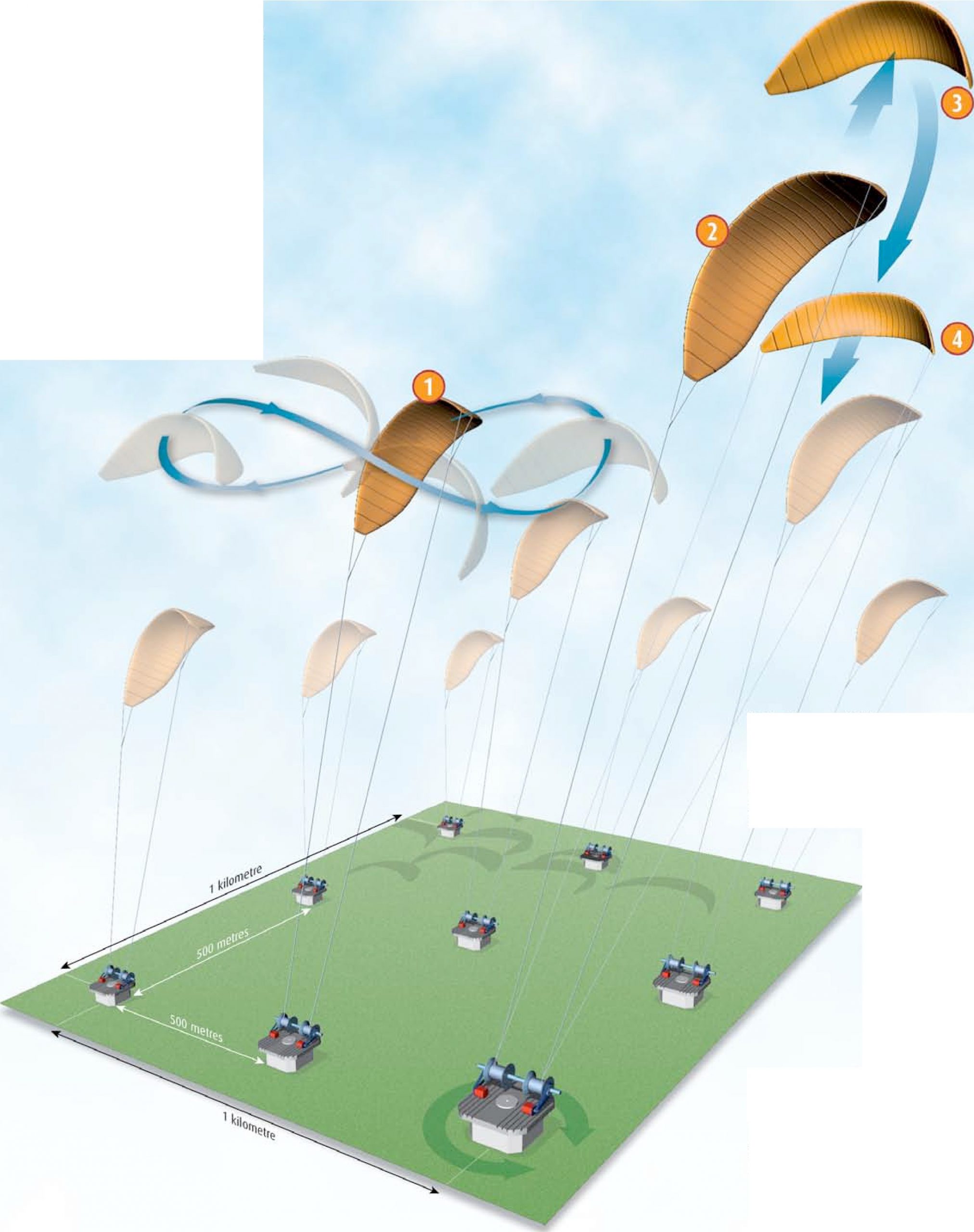
The higher you go, the stronger and steadier the wind
becomes. Kite-farm energy could be up to four limes cheaper than that from conventional wind turbines
Kite is flown in “f igure ol 8” pauern for maximumstalll l ity and lift
®
Winch is released and the tethers unwind, spinning the el ectric generators
®
With tethers l ully unwound, a li ghtweight compuler· con trol methanism adjusts the ki te’saerofoil, minimising air resistance
/i.’i\ Tethers are immed iately wound back in,
\;W returning kite to original altitude
A kite with an area of 100 square metres can create a force of abou t
2 tonnes on the winch, and generate about 100 kilowatts
Stacking multiple kites onto each pair of tethers would provide units capable ol generating megawatts
Base units incorporate kite-control software, winches and el ectric generators, and can rotate to follow the direction of the wind
A radio link provides communication between the base unit and its kite’s aerofoil adjust ment mechanism
the company spent three days at a Milan airfield testing its prototype kite system at an altitude of 400 metres. The results were extremely good, according to the science director of the Kite Gen team, Mario Milanese of the Polytechnic University of Turin. With a 10-metre-square kite flying in winds of 4 metres per second, they generated an average power of 2.5 kilowatts. The system performed much as simulations predicted. “We think that the key technological issues have been sufficiently assessed,” says Milanese. “With the right financial support we plan to have an industrial prototype in 2 to 3 years.”
So what will these systems look like when they are deployed? Makani, for one, is keeping mum about its plans. All Griffith will say is that their designs are looking less and less like what anyone would recognise as a kite. The Dutch and Italian groups are more candid, and seem to be converging on similar designs.
The basic idea is that, just as a yo-yo spins when its string unfurls, so an electrical generator can be driven by the pull of a kite’s aerofoil (see Diagram). In Kite Gen’s configuration, the kite is flown on two tethers, each one held on a separate drum attached to a computer-controlled winch. Once the kite is launched and in stable flight and pulling on its tethers, the winches are released. The tethers then reel out, spinning the generators. When nearly the entire length of the tethers has unspooled, the winches are engaged to haul them back in, returning the kite to its original position.
Milanese calculates that Kite Gen’s electric winches will consume only about 12 per cent of the total generated power. The difference between power generated and power used can be maximised by taking advantage of lulls in the wind and also by using a mechanism that adjusts the kite’s
aerofoil in-flight to reduce lift, he says. By repeating this cycle again and again, the kite acts as a wind turbine.
The Delft researchers envisage a similar system that they call a “laddermill”. Rather than a single kite, they plan to stack kites on a single tether. These could change their tack or configuration depending on whether they are being pulled out by the wind or reeled in by the winch. This way, they can maximise lift as the tether unspools and reduce wind resistance as it is reeled in. The team says a full-size unit could generate about 50 megawatts, almost 10 times the power generated by today’s largest wind turbines.
There are still plenty of problems to overcome, however. What is the most efficient way to maintain and maximise lift during lulls in the wind? How do you keep the kite aloft for as long as possible should the wind die completely, or prevent it crashing? Another key technical challenge is how to minimise air resistance during the “retraction” phase, as the kite is reeled in. “When people fly kites, they don’t care about the retraction phase, but we do,” Lansdorp says. “We don’t just want to generate as much power as possible when the kites are pulling. We also want to consume as little power as possible when we’re retrieving the lines.”
This is why all the groups are developing computer algorithms to keep their kites flying in the most efficient ways. The Delft group are working with researchers at the Catholic University of Leuven (KUL) in Belgium to work out the best kite-control methods. Their results so far seem to support what many kite enthusiasts already know: to keep the kite aloft and maximise lift, it should travel in a figure of eight.
This conclusion was also reached by kite-
power researcher Allister Furey and his colleague Inman Harvey at the University of Sussex in Brighton, UK. The pair put neural networks in charge of virtual kites, and combined those networks that kept the kites in flight the longest in order to produce even better solutions. Eventually the networks became adept at keeping the kites aloft and keeping the line tension maximised, even when there were gusts and lulls in the wind. Furey and Harvey are now working with Kite Gen to turn their algorithms and simulations into real-world mechanisms for kite control.
It is this goal of automated kite control, and not simply the scaling-up, that will determine the economics of kite power, says Lansdorp. “Scaling it up is not difficult in principle; it’s the automation that is the challenging part,” he says. “We don’t yet know to what extent we’ll be able to automate the process.” The Delft-Leuven plan for this year is to create algorithms to control a kite-and-winch system capable of generating 20 kilowatts and of operating without supervision or external control once the kite has been launched.
Whatever the algorithms used, the actual mechanism which controls the aerofoils will probably need to be located on or near the kite – at altitude, in other words. “If you pull from the ground on a very long line, you get no reaction,” Lansdorp explains.
Even with potentially complex control systems, Lansdorp is confident that the economics make kites a desirable technology. “When you can be so much cheaper than wind turbines and generate more power, there’s going to be a really big push for it,” he says.
The European Commission has already recommended that high-altitude wind power be among the green technologies
contributing to its target of supplying 20 per cent of energy needs from renewable sources by 2020. So should makers of traditional wind turbines be losing sleep?
Not yet: traditional wind power is booming. Figures released in February by the Global Wind Energy Council revealed that the installed capacity of wind turbines increased by 27 per cent last year, and this growth shows no sign of easing off. Nonetheless, if kites live up to their promise, it should be possible to replace a large proportion of all forms of conventional energy with kite energy, Lansdorp says. He doesn’t see why anyone would buy a traditional wind turbine over a kite-powered system. Turbines are fine on the coast, he says, but land in these areas is often expensive. And you can’t put wind turbines on low-lying ground inland, he says, because there just isn’t enough wind to make them economical. But high-flying kites can work here since the wind at altitude is hardly influenced by the land beneath it.
One kite is all well and good, but Kite Gen has been busy dreaming up a futuristic grand design that they hope might tip the scales in favour of kite power stations. They envisage scores of kites tethered to a single generator that can spin around the vertical axis, like a 3-kilometre-wide carousel. Kite Gen reckons that 60 to 70 kites flying at an altitude of 800 metres, with a total area of around 500 square metres, could be mounted on such a carousel unit and that this set-up could generate several hundred megawatts. The company claims that the cost of generating power in this way would be around ¬15 per megawatt-hour, compared with ¬100 per megawatt-hour for a turbine-based wind farm and around ¬60 per megawatt-hour for fossil-fuel energy. Placed on the site of a decommissioned nuclear reactor – which would already have
an aircraft no-fly zone above it – a kite- driven carousel could generate the same amount of power as its predecessor, Milanese claims (see “Kite-flying hotspots”).
Lansdorp, too, has a new idea: using fixed- wing gliders instead of kites. A kite’s aerofoil has a very limited lifetime because the thin nylon fabric degrades in UV light, he says. Besides lasting longer, a fixed-wing plane is more efficient, providing more power per square metre. “Although a fixed- wing plane will be more expensive to purchase, over the lifetime it would be cheaper per kilowatt-hour,” Lansdorp says. He and several colleagues are working on a project called Aeolus, named after the Greek god of winds. They hope to develop a 100-kilowatt generator within a year, and a 1-megawatt generator a year after that.
Of course, these schemes remain unproven until any significant power is generated. For now, it’s all pie in the sky, and Griffith warns not to expect too much too soon. Harnessing the power of the atmosphere will be expensive and difficult, he says. “I wouldn’t expect to plug your house into kite-powered generators next year.” Nonetheless, the pay-off is worth pursuing. “We believe that there is fabulous potential for electricity that will compete with coal on cost,” Griffith says. “It won’t be next week, but it looks possible.”
NEW SCIENTIST MAGAZINE
KITE-FLYING HOTSPOTS
Should the technology take off, there will be plenty of room in the world for kite farms.
Researchers at the Delft University of Technology in the Netherlands analysed wind power and population patterns and concluded that space is not a problem. “Even in a populated country like the Netherlands, there’s plenty of places you could build them,” says Bas Lansdorp, one of the Delft team. “Spain has much more room and a big appetite for renewable energy, for example. Then there’s places like China and Australia, where space is not an issue at all.”
A frequent objection to kite-power plans is that, at an altitude of 1 kilometre, the kites will intrude on aircraft flight paths. “People say it’s dangerous for aeroplanes, but that’s just rubbish,” says Lansdorp. “It’s no more dangerous than other aircraft: all you need is a good transponder and a light beacon.”
There are already no-fly zones for aircraft that would be ideal for kites. Aircraft are kept away from airspace around nuclear power stations. When those plants are decommissioned, they provide the perfect site for kite-based power generators, says Mario Milanese, a researcher and kite developer at the Polytechnic University of Turin in Italy. In that space, a kite system could generate up to 1 gigawatt, he says – the same as the nuclear plant. Airspace may not be a big problem in Italy anyway: Milanese has already carried out tests in collaboration with the Italian aviation authorities and they are working together to find future test sites. “We are confident that there is enough political will to authorise new sites,” Milanese says.
Dutch researchers, too, report no problems in getting clearance for their tests. Lelystad, a city in the Netherlands, has already offered airspace for testing.



